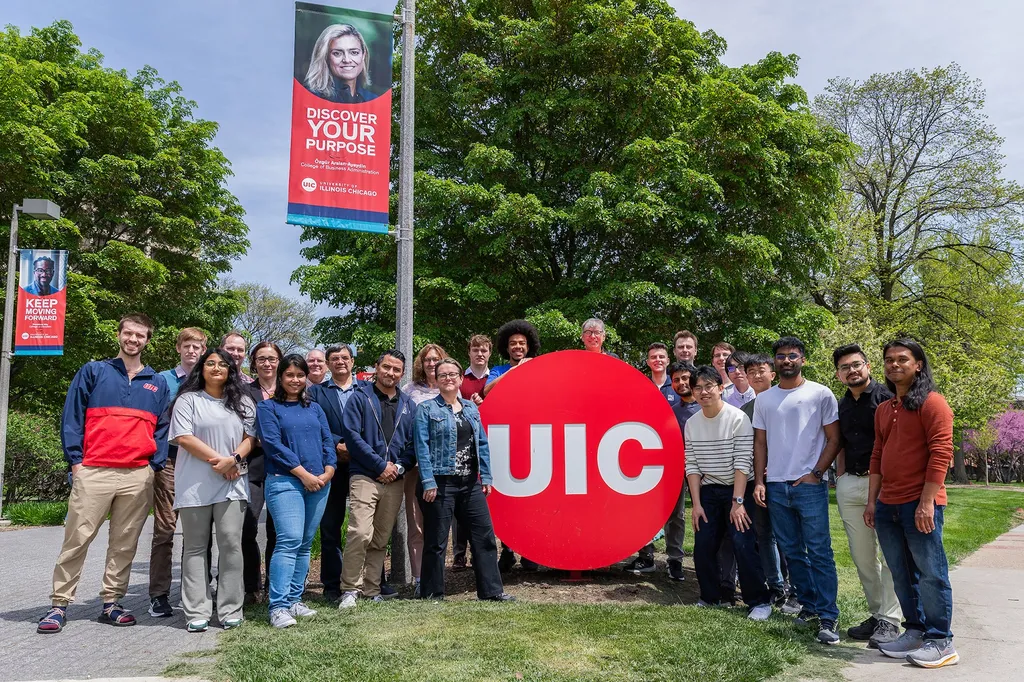In the quest to enhance the performance of ferroelectric materials, a team of researchers led by J W Adkins from the Department of Civil and Materials Engineering at the University of Illinois at Chicago, along with colleagues from Argonne National Laboratory, has made a significant stride. Their work, published in the Journal of Physics Materials (which translates to the Journal of Physical Materials), delves into the intricate dance of epitaxial stress and its impact on the temperature-dependent ferroelectric endurance of Hf0.5Zr0.5O2 (HZO) films.
Ferroelectric materials, known for their spontaneous electric polarization that can be reversed by an external electric field, are pivotal in the energy sector for applications such as memory devices, capacitors, and sensors. The research team explored how epitaxial stress—stress induced during the growth of a crystal film on a substrate—influences the behavior of HZO films across a temperature range from cryogenic to ambient conditions.
The study compared HZO films grown on two different substrates: La0.67Sr0.33MnO3/SrTiO3 (100) and La0.67Sr0.33MnO3/DyScO3 (110). Despite the significantly higher in-plane strain in the La0.67Sr0.33MnO3 layer on DyScO3 (110) compared to SrTiO3 (100), the strain in the HZO layer was minimal. This minimal strain is attributed to domain matching epitaxy, a phenomenon where the conventional strain induced by lattice parameter differences is compensated and minimized by the generation of periodic integer multiples of HZO and La0.67Sr0.33MnO3 planes matched along the interface.
Adkins explained, “The absence of strain propagation into the HZO film via La0.67Sr0.33MnO3 is a result of domain matching epitaxy. This compensation mechanism is crucial for understanding how epitaxial stress can be managed to enhance material properties.”
The research revealed that epitaxial stress present during growth modifies the stability of the orthorhombic and monoclinic phases in the films, leading to differences in observed variable-temperature ferroelectric behavior. The HZO film grown on La0.67Sr0.33MnO3-buffered DyScO3 (110) exhibited 20% greater remanent polarization than its La0.67Sr0.33MnO3-buffered SrTiO3 (100) counterpart due to its enhanced orthorhombic phase volume. This film also experienced a smaller polarization-based wake-up effect.
“Our findings provide insight into the influence of epitaxial stress on the behavior of HZO,” Adkins noted. “This understanding should prove useful for researchers aiming to utilize mismatch strain-based methods of introducing structural modifications for enhanced functionality.”
The study also highlighted subtle differences in the variable-temperature fatigue characteristics of the films, suggesting slight electronic dissimilarities between HZO/La0.67Sr0.33MnO3/SrTiO3 (100) and HZO/La0.67Sr0.33MnO3/DyScO3 (110). These differences can be explained by slight variations in domain pinning behavior due to differences in polar phase volume present in these films.
The implications of this research are profound for the energy sector. By understanding and controlling epitaxial stress, researchers can tailor the properties of ferroelectric materials to enhance their performance in various applications. This could lead to more efficient memory devices, capacitors, and sensors, ultimately contributing to advancements in energy storage and conversion technologies.
As the field of materials science continues to evolve, this study by Adkins and his team provides a crucial piece of the puzzle, offering a deeper understanding of how epitaxial stress can be harnessed to improve the functionality of ferroelectric materials. The insights gained from this research could pave the way for innovative solutions that address the growing demands of the energy sector.

